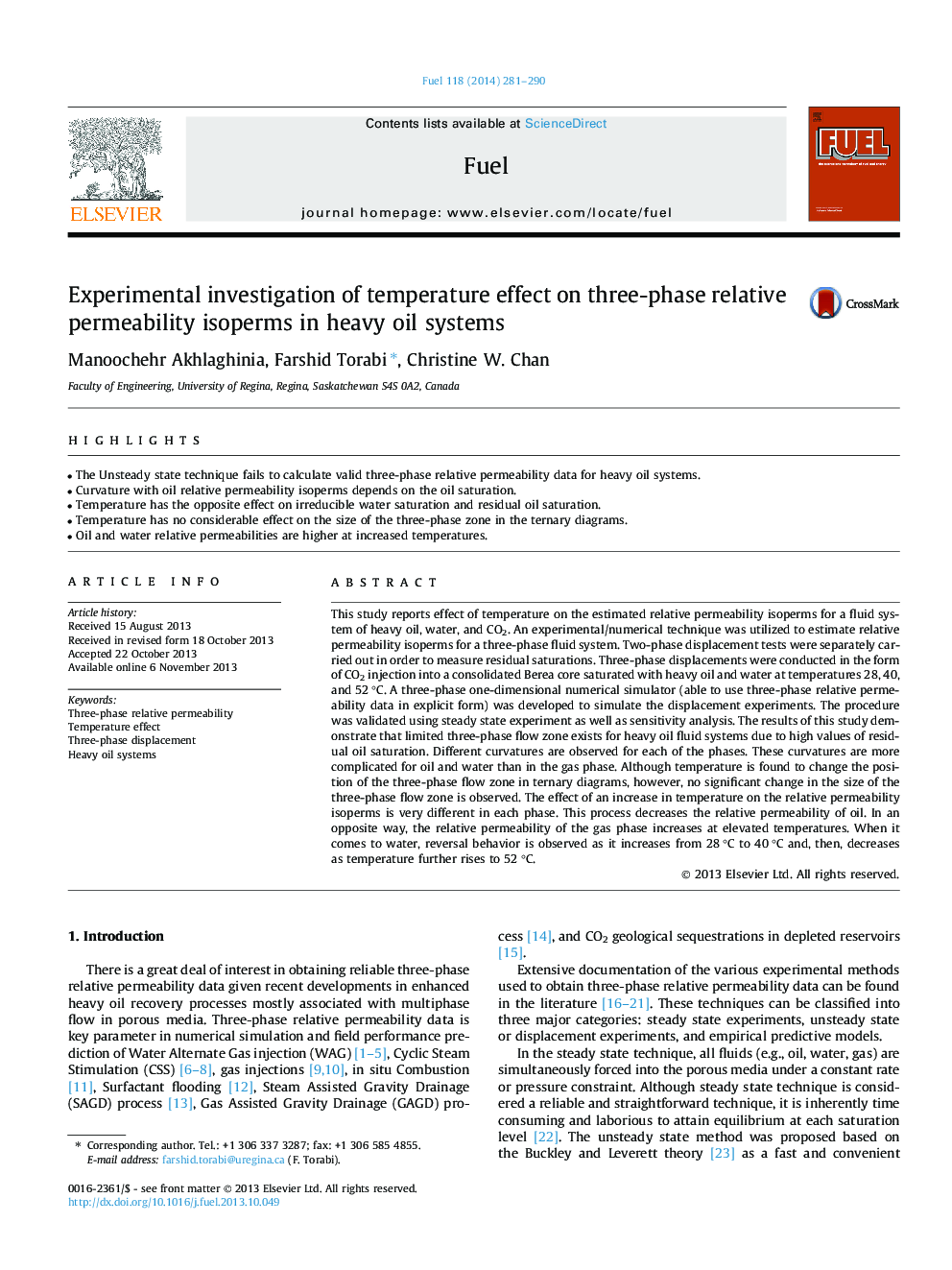| Article ID | Journal | Published Year | Pages | File Type |
|---|---|---|---|---|
| 6638516 | Fuel | 2014 | 10 Pages |
Abstract
This study reports effect of temperature on the estimated relative permeability isoperms for a fluid system of heavy oil, water, and CO2. An experimental/numerical technique was utilized to estimate relative permeability isoperms for a three-phase fluid system. Two-phase displacement tests were separately carried out in order to measure residual saturations. Three-phase displacements were conducted in the form of CO2 injection into a consolidated Berea core saturated with heavy oil and water at temperatures 28, 40, and 52 °C. A three-phase one-dimensional numerical simulator (able to use three-phase relative permeability data in explicit form) was developed to simulate the displacement experiments. The procedure was validated using steady state experiment as well as sensitivity analysis. The results of this study demonstrate that limited three-phase flow zone exists for heavy oil fluid systems due to high values of residual oil saturation. Different curvatures are observed for each of the phases. These curvatures are more complicated for oil and water than in the gas phase. Although temperature is found to change the position of the three-phase flow zone in ternary diagrams, however, no significant change in the size of the three-phase flow zone is observed. The effect of an increase in temperature on the relative permeability isoperms is very different in each phase. This process decreases the relative permeability of oil. In an opposite way, the relative permeability of the gas phase increases at elevated temperatures. When it comes to water, reversal behavior is observed as it increases from 28 °C to 40 °C and, then, decreases as temperature further rises to 52 °C.
Keywords
Related Topics
Physical Sciences and Engineering
Chemical Engineering
Chemical Engineering (General)
Authors
Manoochehr Akhlaghinia, Farshid Torabi, Christine W. Chan,
